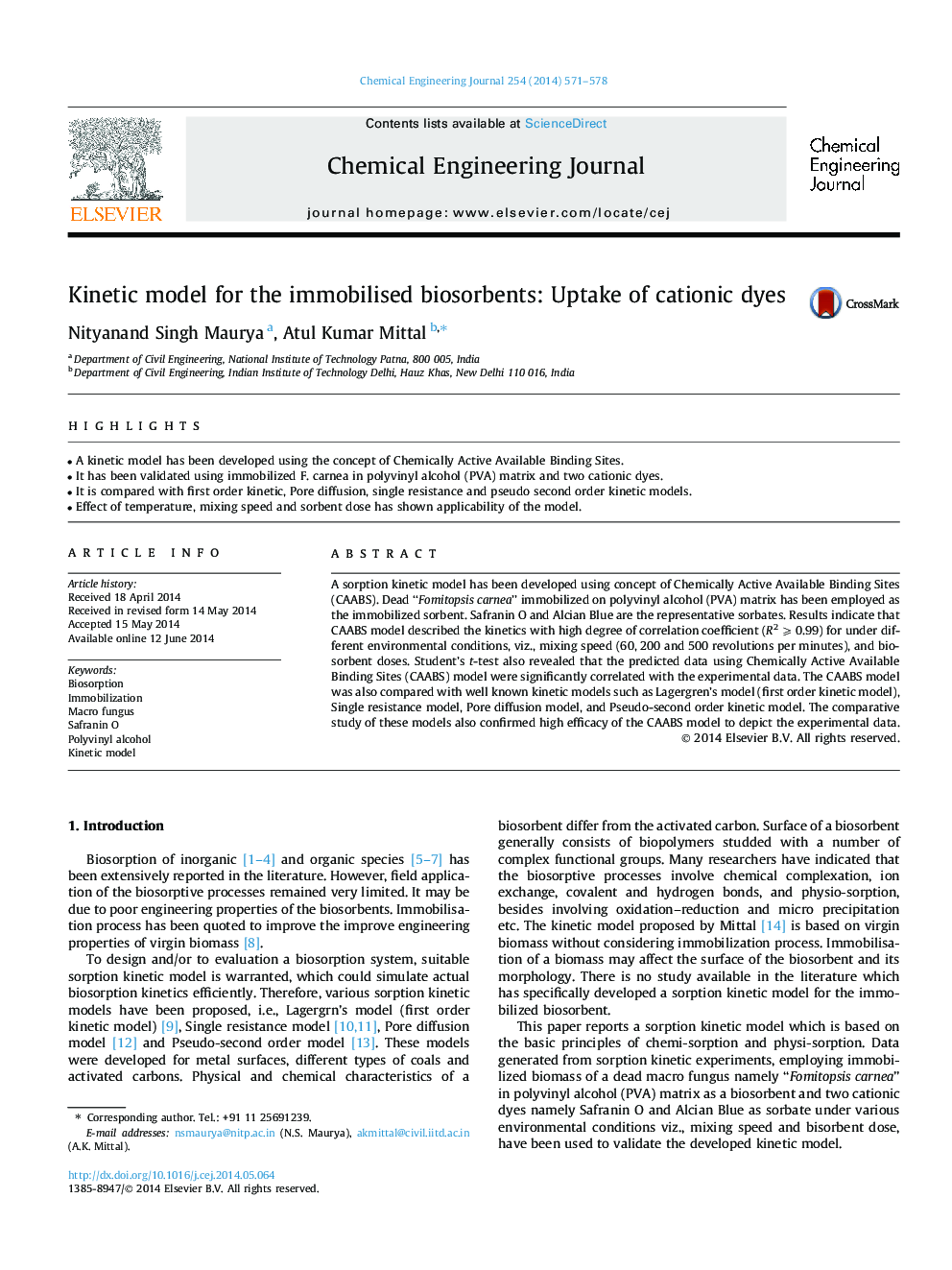| کد مقاله | کد نشریه | سال انتشار | مقاله انگلیسی | نسخه تمام متن |
|---|---|---|---|---|
| 147283 | 456388 | 2014 | 8 صفحه PDF | دانلود رایگان |
• A kinetic model has been developed using the concept of Chemically Active Available Binding Sites.
• It has been validated using immobilized F. carnea in polyvinyl alcohol (PVA) matrix and two cationic dyes.
• It is compared with first order kinetic, Pore diffusion, single resistance and pseudo second order kinetic models.
• Effect of temperature, mixing speed and sorbent dose has shown applicability of the model.
A sorption kinetic model has been developed using concept of Chemically Active Available Binding Sites (CAABS). Dead “Fomitopsis carnea” immobilized on polyvinyl alcohol (PVA) matrix has been employed as the immobilized sorbent. Safranin O and Alcian Blue are the representative sorbates. Results indicate that CAABS model described the kinetics with high degree of correlation coefficient (R2 ⩾ 0.99) for under different environmental conditions, viz., mixing speed (60, 200 and 500 revolutions per minutes), and biosorbent doses. Student’s t-test also revealed that the predicted data using Chemically Active Available Binding Sites (CAABS) model were significantly correlated with the experimental data. The CAABS model was also compared with well known kinetic models such as Lagergren’s model (first order kinetic model), Single resistance model, Pore diffusion model, and Pseudo-second order kinetic model. The comparative study of these models also confirmed high efficacy of the CAABS model to depict the experimental data.
Journal: Chemical Engineering Journal - Volume 254, 15 October 2014, Pages 571–578
